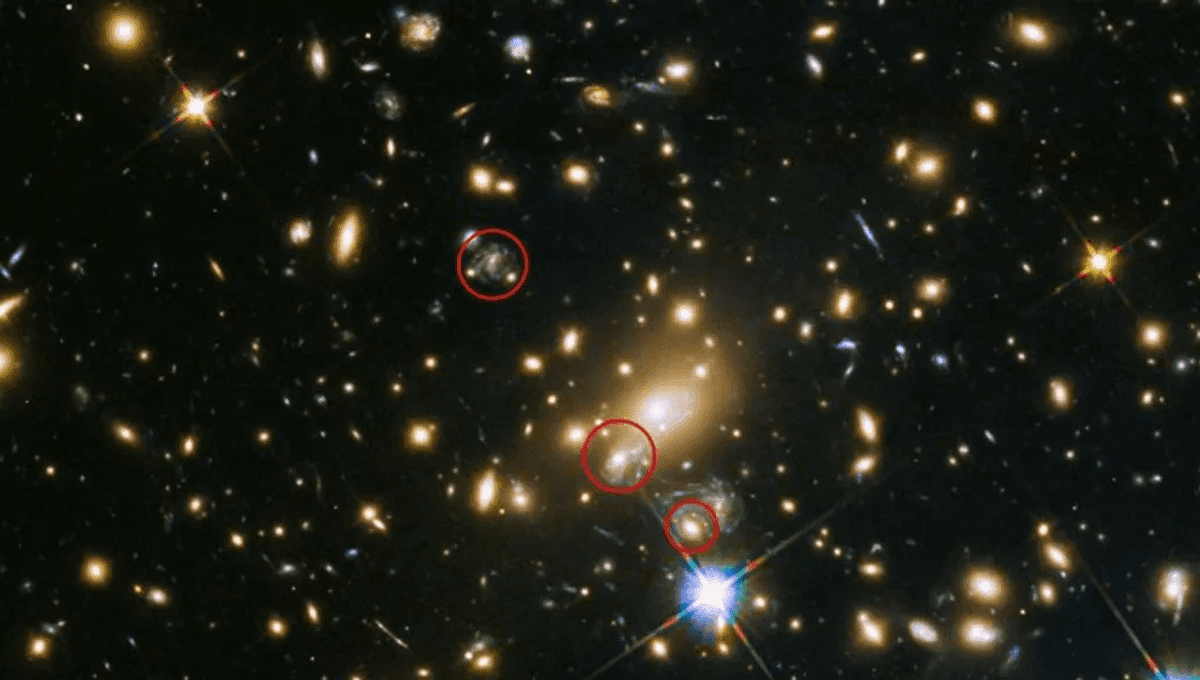
If you want to get a sensational measurement you either go big or go home. And this story really went big. It involves a unique supernova, a galaxy cluster so massive it warps space-time, and the most important problem currently going on in cosmology. A fantastic set of ingredients for some exciting research.
Refsdal Supernova is the exploding event in question. Its claim to fame is that it was seen explode multiple times over a number of years and having seen it a couple of times already, astronomers even predicted when the next explosion was going to take place. Now, this might seem like nonsense. A star can’t go supernova more than once. And it did only explode once, but thanks to a special phenomenon it was seen multiple times.
The phenomenon in question is called gravitational lensing. Any mass warps space-time, but if something is dense enough, like a galaxy cluster, this warp acts like a lens. An object behind this massive cluster, such as a distant dimmer galaxy, is suddenly magnified and multiple images of the background object are created.
Given that these gravitational lenses are huge and not symmetrical like a glass lens, the time it takes light to pass through the lens varies from image to image. And having seen a supernova in some images in 2014, researchers were able to predict its return appearance in a different lensed image the following year.
This supernova is named after Norwegian astrophysicist Sjur Refsdal. Refsdal proposed in 1964 to use the time delay that might occur in the images of a gravitationally lensed supernova to measure the expansion rate of the universe. This value is also known as the Hubble constant. Currently, there is debate on its true value as two independent methods give inconsistent results.
One uses the first light that shone in the big bang, the cosmic microwave background. The other, called the cosmic distance ladder method, uses the distance of cosmic objects to work out the expansion rate.
Using a lensed supernova to measure the Hubble constant, a technique known by the name of time-delay cosmography is another independent approach. A first attempt at using this supernova was done in 2018 but it had a large uncertainty. It was consistent with both results. The new approach used more observations that were able to tighten the measured time delays to within 1.5 percent uncertainty.
The value they obtain is 66.6 kilometers per second per megaparsec. The unit means that if a galaxy is one million parsecs away, due to the expansion of the universe, it will appear to recede from us at 66.6 kilometers per second (149,000 miles per hour). This value is much closer to the measurement from the cosmic microwave background.
The tension in the expansion rate of the universe continues. Another recent study on the clumpiness of dark matter found it agreed with the cosmic microwave background too, but many studies have agreed with the other measurement. Is there something wrong with the instruments or with the physics? So far the answer is not clear.
This paper is published in Science.
Source Link: Supernova Prediction Leads To New Measurement Of Universe’s Expansion